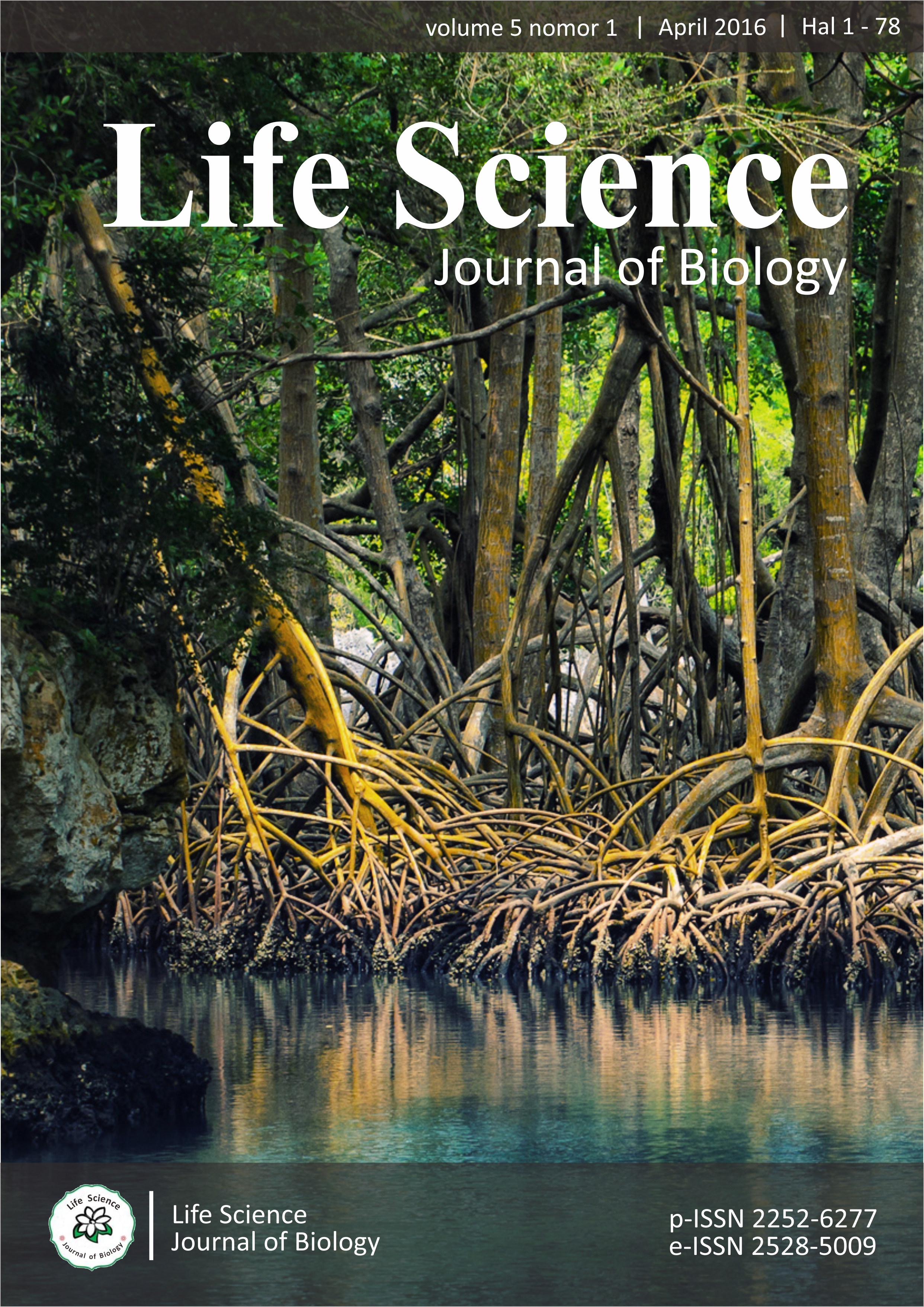ISOLASI BAKTERI HETEROTROF DI SITU CIBUNTU, JAWA BARAT DAN KARAKTERISASI RESISTENSI ASAM DAN LOGAM
Main Article Content
Abstract
Bakteri heterotrofik sangat berperan penting dalam sistem perairan karena kemampuan aktivitas metabolismenya. Mereka berinteraksi dengan logam dan mineral dalam lingkungan alam dan sintetis, mengubah keadaan fisik dan kimianya, logam dan mineral tersebut juga dapat mempengaruhi aktivitas, pertumbuhan dan kelangsungan hidup bakteri. Penelitian ini bertujuan untuk mengisolasi dan mengkarakterisasi bakteri resisten logam dan asam di Situ Cibintu, Cibinong, Jawa Barat. Sampel air diambil dari 3 titik di Situ Cibuntu dan dianalisa distribusi bakteri haterotrofiknya. Isolat bakteri ditanam di media Triptone Glucose Yeast (TGY). Selanjutnya dilakukan resistensi terhadap logam timbal (Pb) dan asam. Hasil penelitian menunjukkan bahwa jumah bakteri heterotrof di Situ Cibuntu sebanyak 3.5x103 cfu mL-1. Mayoritas (73%) isolat bakteri resisten terhadap logam dan sebanyak 47% resisten terhadap asam (pH 4). Bakteri yang resisten didominasi oleh Gram negatif. Penelitian ini memberikan pengetahuan mengenai kemampuan adaptasi bakteri heterotrof pada lingkungan logam dan asam.
Heterotrophic bacteria play an important role in aquatic systems because of their ability of metabolic activities. They interact with metals and minerals in natural and synthetic environments, altering their physical and chemical state, with metals and minerals also able to affect activity, microbial growth and survival. The study aim to isolate and characterize the lead (Pb) and acid resistant of heterotrophic bacteria strains isolated from pond Cibuntu, Cibinong, West Java. Water samples were collected from three points around pond Cibuntu and analyzed the distribution of heterotrophic bacteria. The bacterial isolates were screened on Triptone Glucose Yeast (TGY) agar plates. Lead (Pb) metal and acidic tolerance were tested. In the present study, the population density of heterotrophic bacteria were recorded 3.5x103 cfu mL-1. The majority (73%) of bacteria isolates were resistant to lead and 47% to acid (pH 4). The most abundant type of bacteria resistant was Gram negative. This experiment provides the base to link the adaptation capabilities of heterotrophic bacteria in metal and acid environment.


